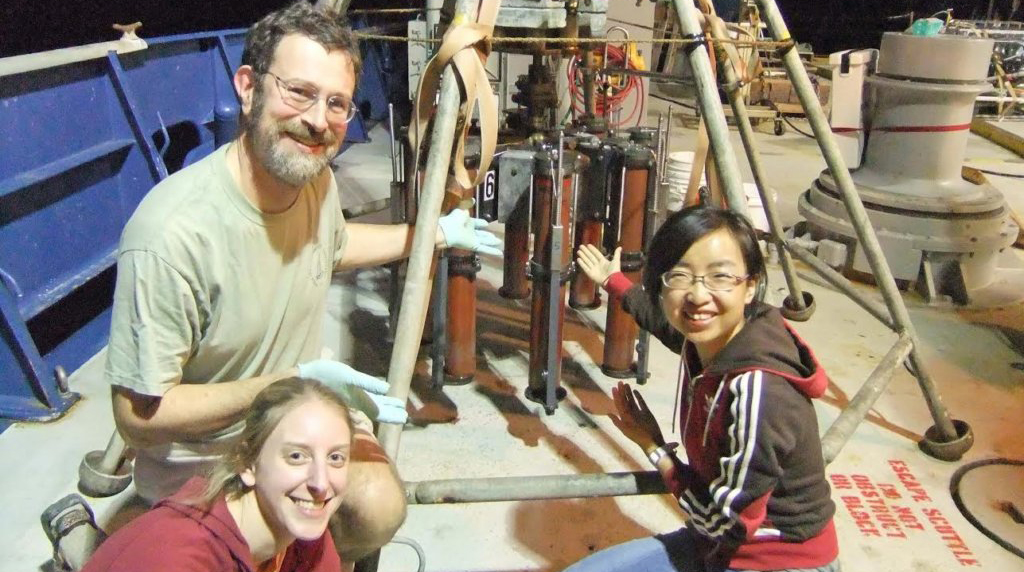July 05, 2017
Scientists conducted genetic sequencing on bacteria to document the oil-associated groups in sediment affected by marine oil snow post-Deepwater Horizon. The researchers observed increases in bacteria that degrade aerobic Polycyclic Aromatic Hydrocarbons (PAHs) and anaerobic sulfate-reducing bacteria in sediment collected from September-November 2010. Aerobic bacteria likely used oxygen rapidly when consuming PAHs and caused localized oxygen depletion that stimulated anaerobic bacteria, who continued residual hydrocarbons degradation. Deepwater Horizon’s bacterial imprint was significantly diminished by late-November 2010 and was undetected by summer 2011, indicating that the oil spill no longer shaped the overall bacterial community structure, most likely since microbially accessible hydrocarbons had been consumed. The researchers published their findings in Frontiers in the Microbiology: Distinct bacterial communities in surficial seafloor sediments following the 2010 Deepwater Horizon blowout.
Oil-derived marine snow formed at the sea surface and sank to the seafloor following Deepwater Horizon. Previous studies observed the response of microbial communities in soft-bottom sediments using samples collected at a single time point or within short time frames. This study complements previous research with a long-term timeline survey of these microbial communities. The researchers obtained sediment samples near the Macondo wellhead in May 2010, September 2010, mid-October 2010, late-November 2010, and July 2011. They then derived and analyzed near-complete 16S rRNA gene clone libraries for bacteria extracted from the samples.
The May 2010 samples served as controls because they did not exhibit signs of marine snow deposition, including discoloration, visible floc, hydrocarbon or sulfide smells, or metal signatures related to altered geochemical conditions. September 2010 samples contained floc-like hydrocarbon-smelling deposits. The mid-October 2010 samples had elevated petroleum concentrations and a distinct red-brown coloration in the upper 3 – 4 cm (indicative of redox). Late-November 2010 and July 2011 samples had a the red-brown surface layer, but no hydrocarbon smell, indicating the loss of volatile compounds.
Cycloclasticus, a genus of a PAH-degrading bacteria reported in Deepwater Horizon-related surface slicks, deep plume, and post-plume deep water, were present in the fall 2010 samples. Roseobacter bacteria, which may play an important role in alkane and PAH degradation, were also abundant in the September 2010 samples. The October 2010 samples exhibited a sharp increase in sulfate-reducing anaerobic Deltaproteobacteria. Increased abundances of PAH-degrading bacteria coincided with the marine oil snow sedimentation event, suggesting that marine snow likely transported the bacteria to the seafloor.
Seafloor microbial populations responded to the marine snow fallout in waves of physiologically and evolutionarily different microbial groups that successively degraded hydrocarbons. Study author Andreas Teske explained, “Some of these microbial players are indigenous to the seafloor sediments in the sense that they are never found in the water column. Others appear to be equally at home on the seafloor and in the oil-contaminated marine snow particles that sank through the water column. Finally, some of these particle-associated microbes are not native to sediments but appear to hitch a ride down to the seafloor.”
According to Teske, further analysis identified some previously unknown hydrocarbon-degrading bacteria. “The catalogue of known oil-degrading bacteria appears to be surprisingly incomplete. The ‘usual suspects’ are limited to relatively few bacterial species and genera that have been studied in the lab,” he said. “As soon as you compare these well-studied oil degraders with those populations that are responding strongly to the oil spill in nature, it becomes clear that many microbial oil degraders have not been cultured and studied at all.”
Data for this study are publicly available through the Gulf of Mexico Research Initiative Information and Data Cooperative (GRIIDC) at doi:10.7266/N7RF5S21.
The study’s authors are Tingting Yang, Kelly Speare, Luke McKay, Barbara J. MacGregor, Samantha B. Joye, and Andreas Teske.
************
This article was written by Maggie Dannreuther and originally appeared online here.
The Gulf of Mexico Research Initiative (GoMRI) is a 10-year independent research program established to study the effect, and the potential associated impact, of hydrocarbon releases on the environment and public health, as well as to develop improved spill mitigation, oil detection, characterization and remediation technologies. An independent and academic 20-member Research Board makes the funding and research direction decisions to ensure the intellectual quality, effectiveness and academic independence of the GoMRI research. All research data, findings and publications will be made publicly available. The program was established through a $500 million financial commitment from BP. For more information, visit http://gulfresearchinitiative.org/.


















 back to top
back to top